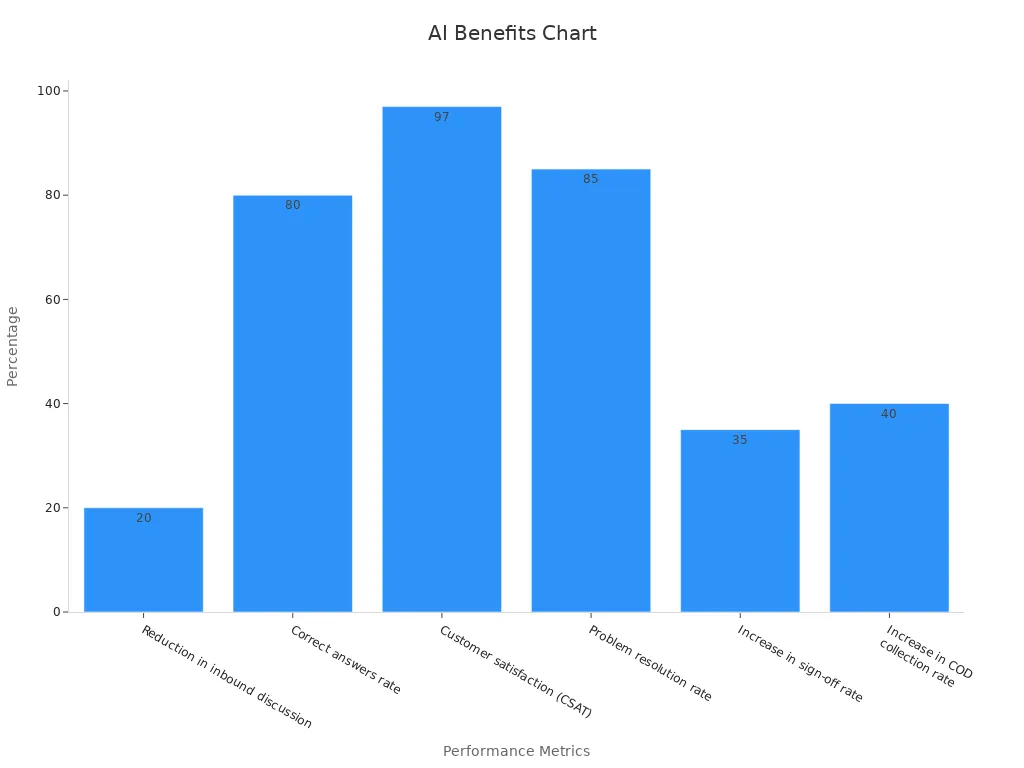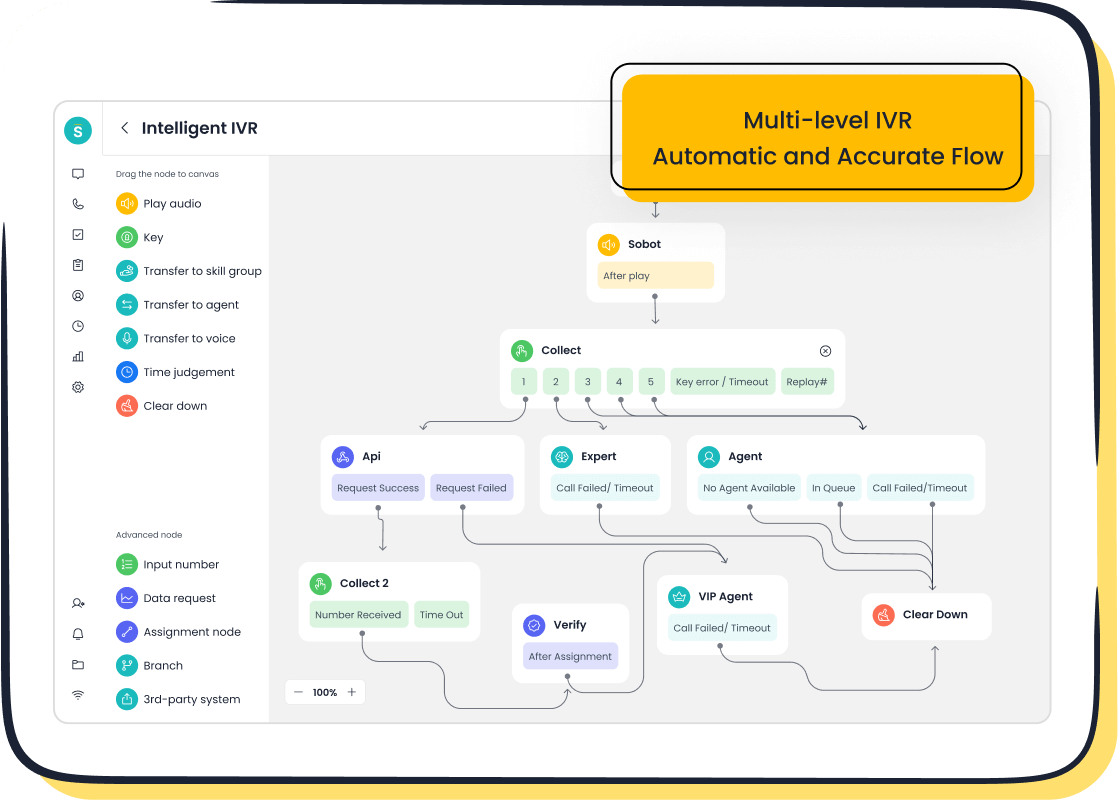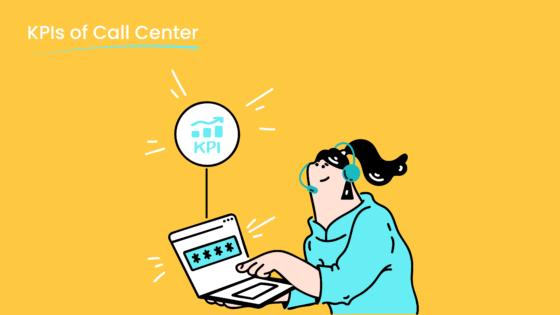Smart Steps to Proactive Customer Service Success

Imagine a world where your customers feel heard even before they voice their concerns. That’s the magic of proactive customer service. Instead of waiting for complaints, you anticipate needs and solve problems upfront. This approach doesn’t just boost customer satisfaction—it drives increased customer loyalty. Did you know 67% of customer churn happens when issues aren’t resolved during the first interaction? Or that 91% of unhappy customers leave without saying a word? By focusing on positive customer experience, you can turn fleeting interactions into lasting relationships. Companies like Sobot offer proactive customer service examples, proving that a well-timed solution can transform your brand’s reputation.
Understand Customer Needs
Understanding customer needs is the foundation of proactive customer service. When you know what your customers value, you can tailor your strategies to meet their expectations and build lasting relationships.
Define What Customers Value
What do your customers truly care about? It’s not just about the product or service you offer—it’s about how it fits into their lives. Studies like the Evidence Gap report show that customers value trust and confidence in their interactions. They want solutions that simplify their problems and enhance their experiences. For example, Samsung achieved a 97% customer satisfaction rate by using Sobot’s unified contact center solution to deliver personalized service. By identifying what matters most to your audience, you can create a customer service strategy that resonates deeply.
Collect Feedback Through Surveys and Tools
Customer feedback is your compass for understanding needs. Surveys, polls, and feedback tools help you gather insights directly from your audience. For instance, open-ended questions allow customers to express themselves freely, while segmentation divides responses into meaningful groups for better analysis. Visualization tools like charts and graphs highlight trends, making it easier to spot areas for improvement. Sobot’s AI-powered solutions can streamline this process by tagging feedback and analyzing relationships between variables. These methods ensure you’re not just collecting data—you’re turning it into actionable insights.
| Method | Description |
|---|---|
| Open-ended questions | Identify phrases and themes that resonate with customers. |
| Segmentation | Group feedback based on shared characteristics for tailored strategies. |
| Visualization | Use charts and graphs to highlight key insights and trends. |
| Tagging feedback | Categorize responses to improve organization and spot trends. |
Analyze Customer Behavior Patterns
Customer behavior tells a story. By analyzing patterns, you can predict future needs and refine your approach. Statistical models like regression analysis and time series analysis uncover trends, while machine learning algorithms classify and cluster data for deeper insights. Predictive analytics, such as Random Forest or Gradient Boosting, forecast behaviors like purchase likelihood or service preferences. Sobot’s AI solutions excel in this area, offering tools that analyze customer interactions across channels to reveal actionable insights. When you understand how your customers behave, you can anticipate their needs and deliver proactive solutions.
Anticipate Customer Needs with Proactive Strategies

Proactive customer service isn’t just about solving problems—it’s about predicting them before they arise. When you anticipate customer needs, you create experiences that feel seamless and thoughtful. This approach builds trust, loyalty, and satisfaction, turning casual customers into lifelong advocates.
Predictive Analytics for Customer Insights
Imagine knowing what your customers want before they even ask. Predictive analytics makes this possible. By analyzing historical data, trends, and behaviors, you can forecast customer needs and deliver solutions proactively. For example, Walmart uses predictive analytics to manage inventory, ensuring products are available when customers need them. This strategy reduces stockouts and boosts sales.
Sobot’s AI solutions take predictive analytics to the next level. They analyze customer interactions across channels, identifying patterns and preferences. With tools like AI-powered Voicebots and chatbots, you can predict service preferences or purchase likelihood. This means you’re not just reacting—you’re anticipating.
| Strategy | Impact on Retention |
|---|---|
| Anticipating customer needs | Prevents churn before it happens |
| Understanding customer preferences | Enhances customer experience and loyalty |
| Proactive problem-solving | Increases customer satisfaction |
Experts agree that leveraging technology to anticipate customer needs significantly improves retention rates. CRM tools can even identify customers at risk of leaving, allowing you to address concerns before they escalate. When you use predictive analytics, you’re not just impressing customers—you’re fostering loyalty.
Monitor Trends and Industry Changes
Staying ahead of the curve means keeping an eye on industry trends. Customer preferences evolve, and businesses that adapt quickly thrive. Trend analysis helps you spot these shifts early, enabling you to adjust your offerings to meet emerging needs.
Take the growing demand for eco-friendly products, for instance. Companies that recognized this trend early gained a competitive edge by introducing sustainable options. Industries like retail and finance use trend analysis to forecast sales and market movements, ensuring they’re always one step ahead.
Sobot’s AI solutions help you monitor trends effortlessly. With real-time analytics and insights, you can track customer behavior and industry changes. Whether it’s identifying new preferences or adjusting to market shifts, Sobot ensures you’re always prepared to meet customer needs.
- Trend analysis provides insights into evolving customer behavior.
- Early identification of trends allows businesses to craft effective strategies.
- Industries like retail and finance rely on trend analysis for forecasting.
Leverage Sobot’s AI Solutions for Anticipation
Sobot’s AI solutions are designed to help you anticipate customer needs with precision. These tools don’t just automate tasks—they provide actionable insights that enhance proactive customer service. For instance, Sobot’s AI-powered Voicebots can recognize customer intent during calls, offering tailored solutions instantly.
The results speak for themselves. Businesses using Sobot’s AI report a 20% reduction in inbound discussions and a 96% positive feedback rate. With an 85% problem resolution rate, Sobot ensures your customers feel valued and supported.

Users rave about Sobot’s ability to enhance customer experiences. One testimonial highlighted how Sobot’s solutions helped serve VIP customers, increasing their trust and satisfaction. With tools like AI copilots and omnichannel support, you can anticipate needs across every touchpoint.
When you leverage Sobot’s AI, you’re not just meeting expectations—you’re exceeding them. Proactive customer service becomes second nature, ensuring your brand stands out in a crowded marketplace.
Address Customer Needs Effectively
Meeting customer needs effectively is the cornerstone of proactive customer service. When you personalize your approach, offer timely solutions, and equip your team with the right skills, you create experiences that build trust and loyalty.

Personalize Interactions Using Sobot’s Voice/Call Center
Personalization transforms negative experiences into opportunities for connection. Customers want to feel valued, and tailoring your outreach shows them you care. Sobot’s Voice/Call Center makes this easy. With features like intelligent IVR and AI-powered Voicebots, you can route calls based on customer preferences and recognize intent instantly.
Imagine a customer calling about an unresolved issue. Instead of repeating their story, they’re greeted by a system that already knows their history. This seamless interaction builds trust and improves customer satisfaction. Sobot’s unified workspace ensures agents have all the information they need to personalize their approach, reducing average handle time and increasing first-contact resolution rates.
| Feature | Benefit |
|---|---|
| Intelligent IVR | Routes calls to the right agent or team based on customer needs. |
| AI-powered Voicebots | Recognizes intent and provides instant, tailored solutions. |
| Unified Workspace | Gives agents access to complete customer histories for personalization. |
When you personalize your outreach, you’re not just solving problems—you’re building loyalty.
Offer Timely Solutions with Automation
Timely solutions are essential for proactive customer service. Automation helps you deliver faster responses, reduce errors, and free up your team for more complex tasks. Sobot’s AI-powered tools, like chatbots and automated workflows, ensure customers get instant support, even during peak hours.
Take routine inquiries like billing updates or account changes. Instead of waiting for an agent, customers receive immediate answers through automation. This reduces wait times and transforms unmet customer needs into opportunities for engagement.
Here’s how automation drives results:
| Case Study | Description | Impact |
|---|---|---|
| Ticket Processing | Automates ticket routing and processing for faster resolutions. | Enhanced customer satisfaction. |
| Routine Inquiry Handling | Handles repetitive queries without human intervention. | Reduced agent workload. |
| Chatbots and Virtual Assistants | Provides 24/7 support across channels. | Continuous engagement and loyalty. |
For example, a food delivery app reduced its average handling time by 15% using automation. Sobot’s solutions offer similar benefits, helping you turn complaints into opportunities for improved customer satisfaction.
Train Teams for Proactive Customer Service
Your team plays a vital role in delivering proactive customer service. Training equips them to anticipate needs, personalize interactions, and transform negative experiences into positive ones. Regular learning opportunities keep your team updated on industry trends and customer expectations.
Sobot supports this with tools like AI copilots, which assist agents in generating responses and summaries. Peer-to-peer learning fosters collaboration, while performance reviews align individual goals with your customer-focused approach.
Proactive customer service training doesn’t just improve skills—it boosts retention and satisfaction. Businesses that invest in training see profit increases ranging from 25% to 95%.
Here’s how training impacts performance:
- Customer Satisfaction Scores (CSAT) improve as agents address needs effectively.
- Net Promoter Score (NPS) rises when customers experience personalized service.
- Retention rates increase as proactive strategies build loyalty.
When you empower your team, you’re not just meeting expectations—you’re exceeding them.
Build Systems for Proactive Customer Service

Building systems for proactive customer service is like laying the foundation for a strong house. When you have the right tools and processes in place, you can anticipate customer needs, streamline operations, and create a seamless customer journey.
Implement CRM and Knowledge Base Tools
CRM and knowledge base tools are essential for proactive customer service. They help you organize customer data, track interactions, and provide quick access to solutions. With these tools, you can identify common issues and address them before they escalate.
- Adoption of New Technologies: Advanced tools like Sobot’s CRM streamline processes, making it easier to foresee potential problems and act proactively.
- Team Training: Equip your team to use these tools effectively. This fosters a proactive mindset and ensures they engage with empathy.
- Constant Communication: Personalized communication nurtures relationships and creates opportunities for proactive engagement.
For example, Sobot’s unified workspace integrates CRM and knowledge base tools, allowing agents to access customer histories instantly. This reduces repetitive questions and improves resolution times. By promoting self-service through a well-organized knowledge base, you empower customers to find answers independently, enhancing their experience.
Automate Routine Tasks with Sobot’s AI Solutions
Automation is a game-changer for proactive customer service. It reduces manual effort, minimizes errors, and ensures consistent service quality. Sobot’s AI solutions excel in automating routine tasks like ticket processing and inquiry handling.
| Benefit | Description |
|---|---|
| Efficiency | Automation reduces manual effort, leading to fewer errors in routine tasks. |
| Service Consistency | AI tools ensure consistent responses to customer inquiries, enhancing overall service quality. |
| Data-driven Insights | Real-time analytics help identify bottlenecks, optimizing processes for better customer interactions. |
For instance, Sobot’s chatbots provide 24/7 support, handling repetitive queries instantly. This frees up your team to focus on complex issues. Automated workflows also streamline ticket management, ensuring faster resolutions and happier customers.
Create Seamless Omnichannel Experiences
Customers expect a smooth journey across all touchpoints. A seamless omnichannel experience ensures they can switch between channels without repeating themselves.
Did you know 80% of consumers are more likely to buy from brands offering tailored experiences? Sobot’s omnichannel solutions unify communication channels like voice, chat, and email. This integration ensures agents have a complete view of the customer journey, enabling personalized interactions.
Experts agree that predictive analytics and AI play a crucial role in creating these experiences. Sobot’s tools adapt in real-time, ensuring your customers feel understood and valued. With 66% of customers expecting companies to understand their individual needs, offering a seamless experience isn’t just a bonus—it’s a necessity.
Measure and Improve Proactive Efforts
Proactive customer service doesn’t stop at implementation—it’s an ongoing process. To stay ahead, you need to measure your efforts, gather feedback, and refine your strategies. Let’s explore how you can do this effectively.
Track Key Metrics and KPIs
Tracking the right metrics helps you understand how well your proactive strategies are working. Key performance indicators (KPIs) like customer satisfaction scores and retention rates reveal whether you’re meeting customer needs.
| Metric | Description |
|---|---|
| Customer Satisfaction Score | Measures how satisfied customers are with your service. |
| Customer Lifetime Value | Estimates the total revenue you can expect from a customer over their relationship with you. |
| Net Promoter Score | Gauges loyalty by asking how likely customers are to recommend your business. |
For example, a high Net Promoter Score (NPS) indicates strong customer loyalty. Sobot’s analytics tools make it easy to track these KPIs in real time. By monitoring trends, you can identify areas for improvement and act before issues arise.
Tip: Focus on metrics like first response time and time to resolution. They directly impact customer satisfaction and retention.
Gather Post-Service Feedback
Feedback is your secret weapon for improving proactive customer service. Surveys, interviews, and focus groups help you understand what customers think about your service.
| Method | Description | Effectiveness |
|---|---|---|
| Surveys | Easy to distribute and analyze. Includes CSAT, NPS, and CES surveys. | Clear questions lead to reliable feedback. |
| Interviews | One-on-one conversations for deeper insights. | Active listening enhances feedback quality. |
| Social Media | Monitor customer sentiments in real time. | Provides unfiltered, actionable insights. |
Sobot’s tools simplify feedback collection. For instance, automated surveys can be sent immediately after a service interaction. This ensures you capture fresh, honest opinions. Use this data to refine your approach and address unmet customer needs.
Continuously Optimize Strategies with Sobot’s Analytics
Optimization is key to staying proactive. Sobot’s analytics tools help you identify patterns and fine-tune your strategies. Frameworks like Continuous Quality Improvement (CQI) ensure you’re always improving.
| Framework | Description | Impact on Service Delivery |
|---|---|---|
| Continuous Quality Improvement (CQI) | Engages your team in ongoing adjustments. | Leads to measurable improvements in outcomes. |
| Breakthrough Series Collaborative (BTS) | Combines CQI with peer learning. | Boosts adoption of effective strategies. |
For example, Sobot’s AI-powered insights can highlight recurring issues or bottlenecks in your service process. By addressing these, you’ll see improved customer satisfaction and loyalty. Remember, proactive customer service is a journey, not a destination.
Proactive customer service starts with understanding your audience. When you anticipate their needs, address concerns effectively, and build systems that support seamless interactions, you create a foundation for success. Measuring your efforts ensures continuous improvement. These five steps—understanding, anticipating, addressing, building, and measuring—work together to enhance experiences and foster loyalty.
Research shows customers value personalized offers and convenience, which increases their willingness to share data for better service. Businesses that adapt to changing needs and understand unique problems see stronger connections and loyalty. Sobot’s AI-powered tools make this process effortless, helping you deliver tailored solutions that boost satisfaction.
By embracing proactive strategies, you’ll not only meet expectations but exceed them. The result? Increased customer loyalty, happier interactions, and a brand that stands out.
FAQ
What is proactive customer service?
Proactive customer service means anticipating your customers' needs and solving issues before they arise. Instead of waiting for complaints, you take action to improve their experience. Tools like Sobot’s AI-powered Voicebots help predict customer needs and deliver timely solutions.
How can Sobot’s AI solutions improve customer service?
Sobot’s AI solutions analyze customer interactions to identify patterns and preferences. They automate repetitive tasks, provide instant support, and help your team focus on complex issues. This approach boosts efficiency and ensures a seamless customer experience.
Why is personalization important in customer service?
Personalization shows customers you value them. For example, Sobot’s Voice/Call Center uses intelligent IVR to route calls based on preferences. This reduces wait times and creates a more satisfying experience, increasing loyalty.
How do I measure the success of proactive customer service?
Track metrics like Customer Satisfaction Score (CSAT), Net Promoter Score (NPS), and first response time. Sobot’s analytics tools make it easy to monitor these KPIs and identify areas for improvement.
Can small businesses benefit from Sobot’s solutions?
Absolutely! Sobot’s scalable tools, like chatbots and unified workspaces, are perfect for businesses of all sizes. They streamline operations, reduce costs, and enhance customer satisfaction, making them ideal for small businesses aiming to grow.
See Also
10 Strategies to Enhance Live Chat Customer Experience
10 Actions to Establish Omnichannel Contact Center Systems
10 Guidelines for Selecting Social Media Support Tools
